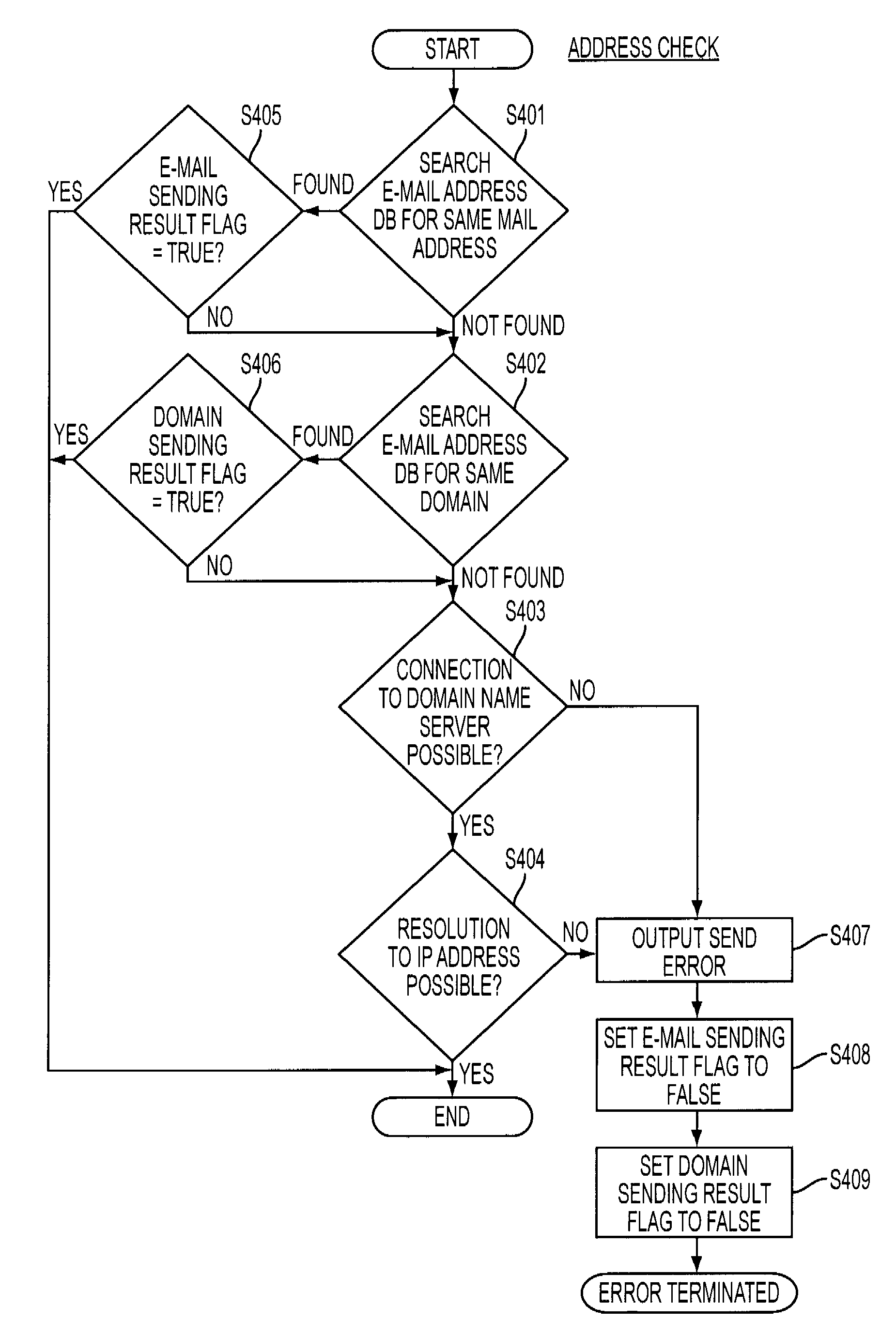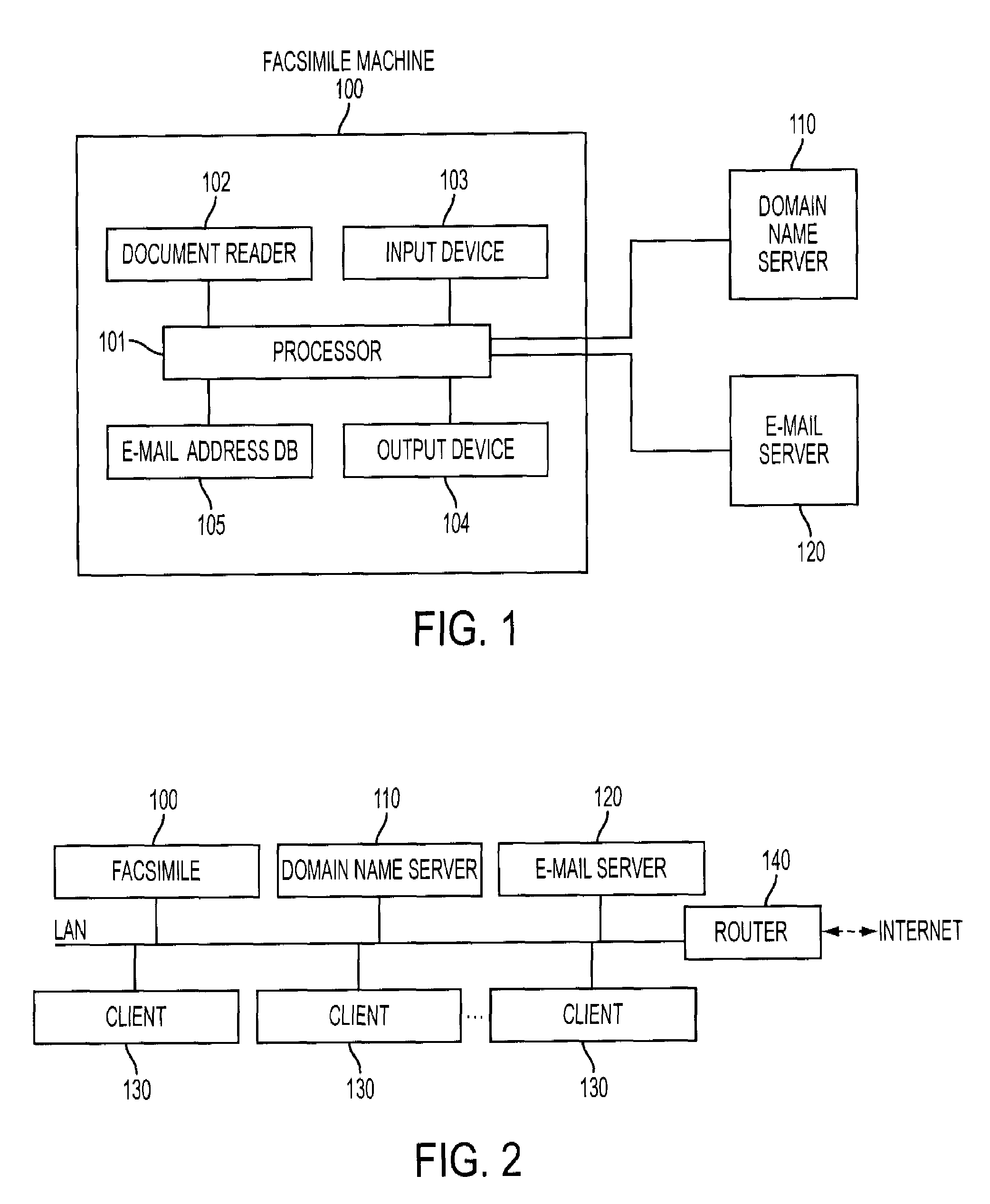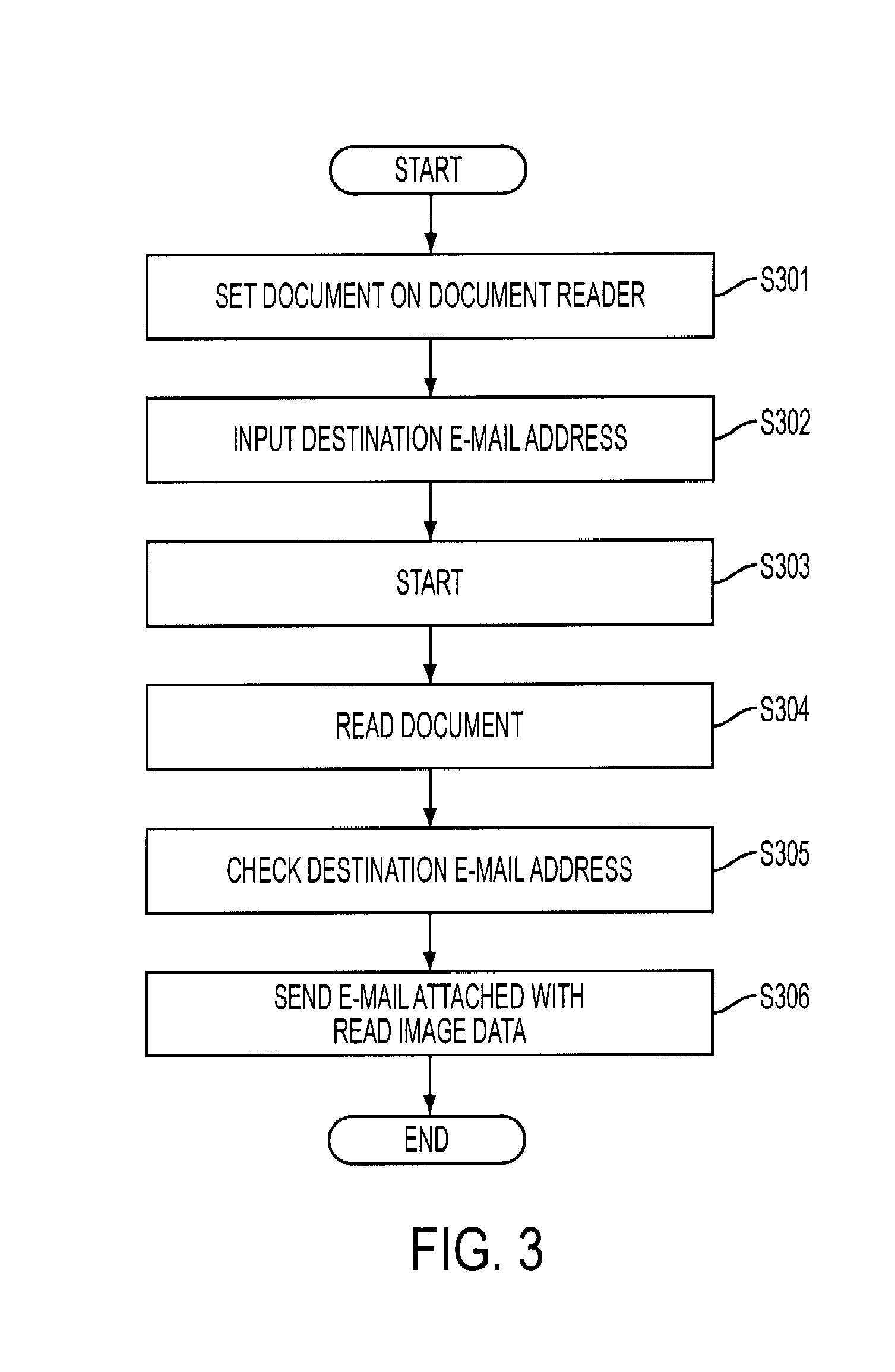Method and apparatus for confirming before sending an e-mail attached with image data
- Summary
- Abstract
- Description
- Claims
- Application Information
AI Technical Summary
Benefits of technology
Problems solved by technology
Method used
Image
Examples
case 1
2.1) Case 1
[0054]As shown in FIG. 8, it is assumed that the mail address database 105 contains three mail addresses and a destination mail address “user2@abc.co.jp” is inputted with the input device 103. In this case, the mail address database 105 is searched for the inputted mail address “user2@abc.co.jp” and no match is found (see the step S401 of FIG. 4). Accordingly, the mail address database 105 is further searched for the domain “abc.co.jp” (see the step S402 of FIG. 4). Since the domain “abc.co.jp” is found, it is checked whether the domain sending result flag corresponding to the domain “abc.co.jp” is “TRUE” (see the step S406 of FIG. 4). Since the domain sending result flag is “TRUE,” the e-mail is sent to the destination.
case 2
2.2) Case 2
[0055]As shown in FIG. 9, it is assumed that the mail address database 105 contains three mail addresses and a destination mail address “user1@def.co.jp” is inputted with the input device 103. In this case, the mail address database 105 is searched for the inputted mail address “user1@def.co.jp” and no match is found (see the step S401 of FIG. 4). Accordingly, the mail address database 105 is further searched for the domain “def.co.jp” (see the step S402 of FIG. 4). Since the domain “def.co.jp” is found, it is checked whether the domain sending result flag corresponding to the domain “def.co.jp” is “TRUE” (see the step S406 of FIG. 4). Since the domain sending result flag is “FALSE,” it is further checked whether the connection to the name server 110 is possible (see the step S403 of FIG. 4). If the connection is possible, the name server 110 tries to resolve the domain “def.co.jp” to an IP address. When the domain “def.co.jp” can be converted to an IP address “xx.xx.xx.x...
case 3
2.3) Case 3
[0056]As shown in FIG. 10, it is assumed that the mail address database 105 contains three mail addresses and a destination mail address “user4@zzz.co.jp” is inputted with the input device 103. In this case, the mail address database 105 is searched for the inputted mail address “user4@zzz.co.jp” and no match is found (see the step S401 of FIG. 4). Accordingly, the mail address database 105 is further searched for the domain “zzz.co.jp” (see the step S402 of FIG. 4). Since the domain “zzz.co.jp” is found, it is checked whether the domain sending result flag corresponding to the domain “zzz.co.jp” is “TRUE” (see the step S406 of FIG. 4). Since the domain sending result flag is “FALSE,” it is further checked whether the connection to the name server 110 is possible (see the step S403 of FIG. 4). If the connection is possible, the name server 110 tries to resolve the domain “zzz.co.jp” to an IP address. If the domain “zzz.co.jp” cannot be converted to an IP address in the na...
PUM
 Login to View More
Login to View More Abstract
Description
Claims
Application Information
 Login to View More
Login to View More - R&D
- Intellectual Property
- Life Sciences
- Materials
- Tech Scout
- Unparalleled Data Quality
- Higher Quality Content
- 60% Fewer Hallucinations
Browse by: Latest US Patents, China's latest patents, Technical Efficacy Thesaurus, Application Domain, Technology Topic, Popular Technical Reports.
© 2025 PatSnap. All rights reserved.Legal|Privacy policy|Modern Slavery Act Transparency Statement|Sitemap|About US| Contact US: help@patsnap.com



